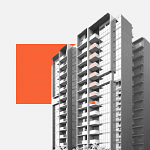Pricey lumber, scarce materials hit US homebuilding
Permits for future home construction in May fall to 7-month low; housing completions also decline
Washington, DC
HOMEBUILDING in the United States rebounded less than expected in May as very expensive lumber and shortages of other materials continued to constrain builders' ability to take advantage of an acute shortage of houses on the market.
The report from the US Commerce Department on Wednesday also showed permits for future home construction falling to a seven-month low. Housing completions also declined while the number of homes authorised for construction but not yet started rose to the highest level since 1999, indicating supply will likely remain tight for a while and boost house price inflation.
"Shortages of materials and labour have builders struggling to increase production of new homes, though the demand remains strong," said Robert Frick, corporate economist at Navy Federal Credit Union in Vienna, Virginia. "Potential home buyers should expect tight inventories and rising prices for both new and existing homes for the foreseeable future."
Housing starts rose 3.6 per cent to a seasonally adjusted annual rate of 1.572 million units last month. Data for April was revised down to a rate of 1.517 million units from the previously reported 1.569 million units.
Groundbreaking activity rose in the Midwest, the West and the densely populated South, but fell in the Northeast.
A NEWSLETTER FOR YOU

Tuesday, 12 pm
Property Insights
Get an exclusive analysis of real estate and property news in Singapore and beyond.
Economists polled by Reuters had forecast starts increasing to a rate of 1.630 million units. Last month's increase still left starts below March's rate of 1.725 million units, which was the highest level since June 2006. Housing starts, however, jumped 50.3 per cent on a year-on-year basis in May.
Single-family homebuilding, the largest share of the housing market, increased 4.2 per cent to a rate of 1.098 million units. Starts for the volatile multi-family segment rose 2.4 per cent to a pace of 474,000 units.
Softwood lumber prices increased a record 154.3 per cent year-on-year in May, according to the latest producer price data. Lumber futures contracts have dropped from historic highs set in early May as sawmills ramped up production and imports increased. Still, prices remain very high.
A survey from the National Association of Home Builders (NAHB) on Tuesday showed confidence among single-family homebuilders fell to a 10-month low in June.
The NAHB blamed the ebb in sentiment on "higher costs and declining availability for softwood lumber and other building materials", noting that was driving up prices of new houses "which has slowed the strong pace of homebuilding".
Copper is in short supply while tariffs on steel imports are also adding to building costs, which are boosting new home prices and contributing to higher inflation. Some appliances are also scarce because of a global semiconductor shortage.
A separate report from the Labor Department on Wednesday showed import prices rising 1.1 per cent in May. That lifted the year-on-year increase to 11.3 per cent, the largest gain since September 2011, from 10.8 per cent in April.
"The US is experiencing cost-push inflation, which historically has proven more temporary than other causes of inflation, primarily demand pull," said Ryan Sweet, a senior economist at Moody's Analytics in West Chester, Pennsylvania.
Stocks on Wall Street were mixed. The US dollar was steady against a basket of currencies. US Treasury prices rose.
Demand for bigger and more expensive accommodations amid the Covid-19 pandemic, which has left millions of Americans still working from home, is driving a housing market boom. The inventory of previously owned homes is near record lows.
House prices have increased by the most in more than 15 years on an annual basis, raising concerns that some first-time buyers could be priced out of the market.
Permits for future homebuilding fell 3.0 per cent to a rate of 1.681 million units in May. Building permits surged 34.9 per cent compared to May 2020. They are running slightly ahead of starts, suggesting moderate gains in homebuilding in the months ahead.
The housing market has been the star performer in the economy's recovery from the Covid-19 recession, which started in February 2020. Residential construction investment has enjoyed double-digit growth since the third quarter of last year. Most economists expect housing will make a modest contribution to gross domestic product growth in the second quarter.
"New residential construction remains strong, but building material pricing and availability are likely to remain significant headwinds," said Charlie Dougherty, an economist at Wells Fargo in Charlotte, North Carolina.
Building permits for single-family homes fell 1.6 per cent to a rate of 1.130 million units. The number of housing units authorised to be built but not started increased 0.8 per cent to a rate of 238,000 at the end of May, the highest since the government started tracking the series in January 1999.
Building permits for multi-family housing projects dropped 5.8 per cent to a rate of 551,000 units. The multi-family housing market is seen getting a lift from people returning to cities as the economy reopens amid an easing of the pandemic's grip.
Housing completions fell 4.1 per cent to a rate of 1.368 million units last month. Single-family home completions dropped 2.6 per cent to a rate of 978,000 units. REUTERS
Share with us your feedback on BT's products and services
